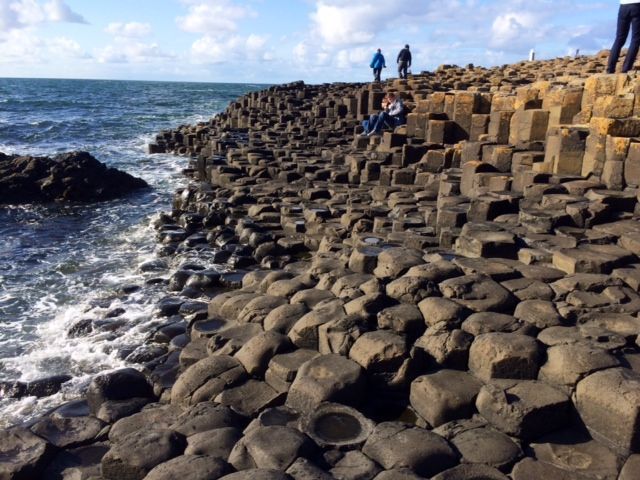I felt a bit like a Storm Petrel visiting Inishowen, coming and going largely unnoticed. It was the one part of the country where I got the sense that there is a great amount of interest in wildlife, yet I was able to stay just the one day, so could not do justice to its wonderful wildlife or those actively involved in promoting it. But I headed for Greencastle in the rain and the wind, to complete my cycle along the Wild Atlantic Way.
Before I left home I was ambivalent about the Wild Atlantic Way, but having cycled along it, I am a convert. This is an extraordinarily good marketing campaign of an extraordinary landscape. The investment in branding and signage, marketing and on-line resources is exactly the kind of infrastructural support that is needed to bring the concept to life. And rather than detracting from the experience, the branding adds to it. One still gets the sense of a beautiful rugged landscape being discovered for the first time. And as I boarded the ferry for Northern Ireland, I wondered, am I first person to have cycled the Wild Atlantic Way?
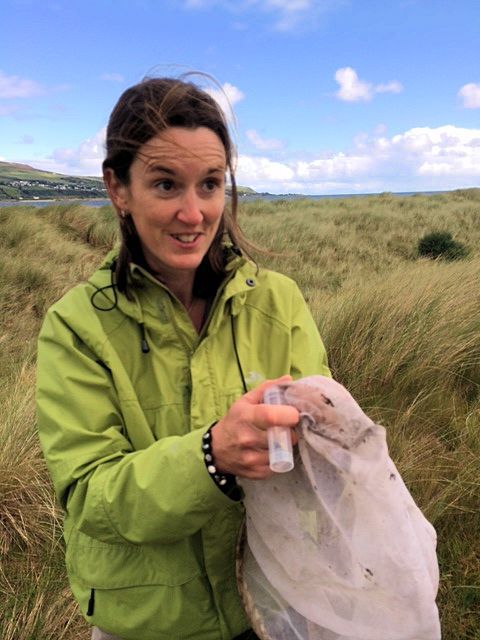
At Magilligan in Northern Ireland, I met up with colleague Úna Fitzpatrick and her young son Micheál. Úna doesn’t realise it, but she has a very important job. She is the Moody’s and Fitch of the pollinator world, collating data and tracking the health of Ireland’s pollinators. And pollination is of vital ecological and economic importance to Ireland – the horticultural industry alone contributes €153 million to the Irish economy each year, but of course pollination services are far more valuable than that. Pollination is principally done by the 101 bee, 20 bumblebee and 180 hoverfly species that occur in Ireland. Over countless generations these insects have carved out different niches for themselves to make best possible use of the resources that are available in the Irish countryside at different times of the year. But with the reduction of flower-rich meadows bees are finding it increasingly difficult to find conditions which allow them to flourish, so much so that more than 50% of all bee species have declined since 1980, and a massive 30% are threatened with extinction. It is an indictment of modern Irish society that we think we can ignore the plight of creatures that are of such enormous benefit to us.
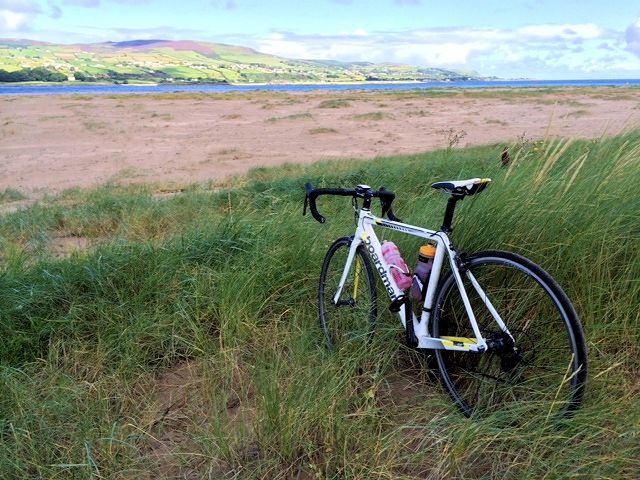
Magilligan Dunes, on the eastern short of Lough Foyle is an amazing site and one of the largest dune systems in the UK. One bee species found here is the Northern Colletes bee. Ireland supports a significant proportion of the world population of this species, and here it appears to be doing well, bucking the trend across Europe where populations are in steep decline. Why this is so, we don’t exactly know. But thanks to the work that Úna is doing, we now have a much better picture on where rare species occur, and how populations are changing. She is also building an important database of the food plants of pollinators, so we are much better placed now, to take actions to conserve these amazing species and the astonishingly important services they perform.
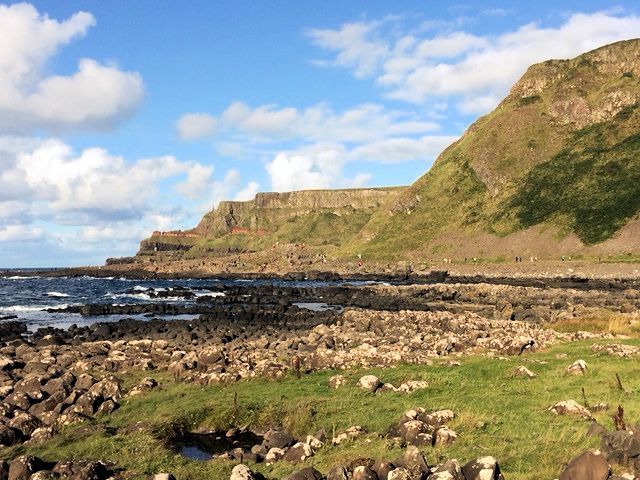
Further east along the north Antrim coast is the iconic Giant’s Causeway. Ever since I can remember, I have been enchanted by the amazing hexagonal shaped columns of basalt formed here. It is a World Heritage Site and one of the most visited sites in the island of Ireland. The relatively new £18 million Visitor Centre is a fitting monument in its own right to this remarkable site.
And living along the coast here, undetected until relatively recently, is a large healthy population of Grayling, a butterfly of rough grassland and bare ground. Such finds are being increasingly made in Northern Ireland thanks to the work of the ebullient Catherine Bertrand. Catherine is the only person in Ireland employed to work on butterfly conservation, and she is making a real difference. Employed by Butterfly Conservation, UK her post is paid by the Northern Ireland Environment Agency to help that organisation meet its conservation priorities on butterflies and moths in Northern Ireland; in all there are nine species of butterfly that are conservation priorities here.
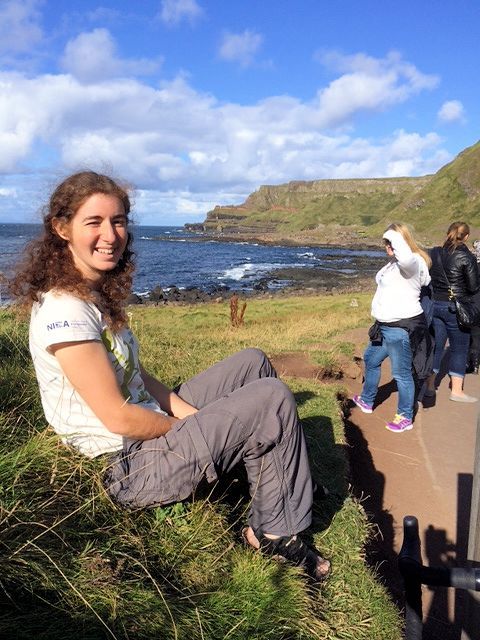
Catherine is the catalyst for butterfly recording in Northern Ireland, and the interest in butterfly recording has grown significantly in recent years thanks to her energy and enthusiasm for the job. There is strong collaboration between Catherine and the National Biodiversity Data Centre as we manage the Irish Butterfly Monitoring Scheme where volunteers walk a fixed route each week counting the butterflies seen. About 150 volunteers participate in the survey at the moment, both north and south of the border, and thanks to their efforts data on how butterfly populations are changing across the island of Ireland is generated. There is a perception that interest in wildlife in Ireland is not as great as that in Britain, but the butterfly and bumblebee monitoring schemes in Ireland have greater participation, per head of the population, than in Britain. So we are right to be proud of these two monitoring schemes.
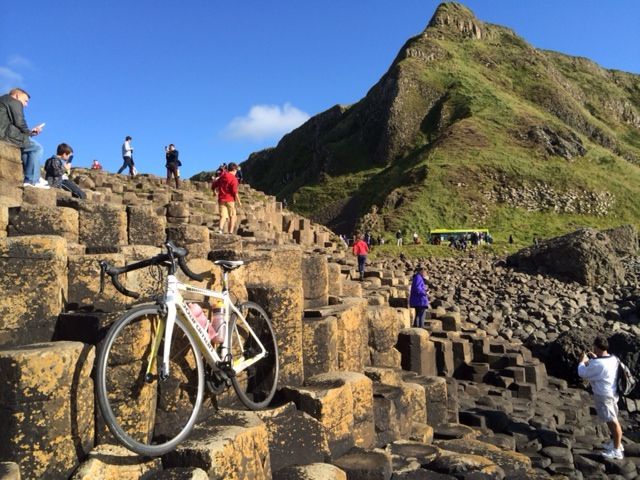
Before leaving the Giant’s Causeway I couldn’t resist the temptation of having a photograph of my bike on the famous basalt scene. So taking the bike on my shoulder I clambered over the basalt columns struggling with awkward cycling shoes, no doubt, a sight for sore eyes. For those few minutes, my exploits entertained the throngs of Japanese tourists visiting the Causeway, an unexpected piece of entertainment. The National Trust staff did approach me to enquire ‘..if everything was alright, Sir’. At that stage, though I had better behave myself!

